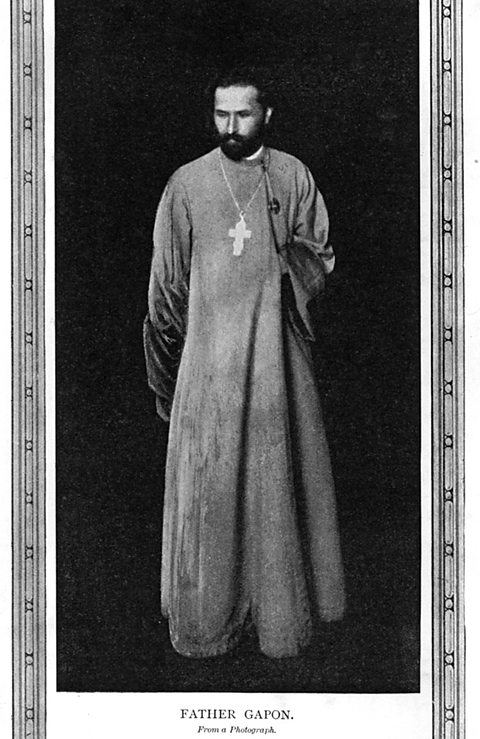The 1905 revolution

In an attempt to quell economic discontent among the workers, Minister of the Interior Plehve had established a legal trade union in St Petersburg. Called the Assembly of Russian Factory and Mill Workers, it was led by a Russian Orthodox priest, Father Georgy Gapon. It was this organisation that would, unwittingly, set the 1905 Revolution in motion.
In late 1904, four union members at the Putilov Iron Works Plant in St Petersburg were dismissed. Gapon called for industrial action. Over the coming days over 100 thousand workers in the city went on strike. Although protests were peaceful, troops were brought in to support existing forces in the city.
Father Gapon organised a petition complaining about working conditions in the city and calling for change. It was signed by over 150 thousand people.
On 22 January 1905, Father Gapon led a march to deliver a petition to the Tsar. Thousands of workers took part in this peaceful protest. The workers were not trying to overthrow the Tsar. They believed that the Tsar did not know of their plight. Instead they blamed the Tsarist ministers and officials.
This demonstration of factory workers was brutally put down by Russian soldiers. Up to 200 people were killed by rifle fire and Cossack charges. This event became known as Bloody Sunday and is seen as one of the key causes of the 1905 Revolution.
The aftermath brought about a short-lived revolution in which the Tsar lost control of large areas of Russia. The revolution failed but it served as a serious warning of what might happen in the future.